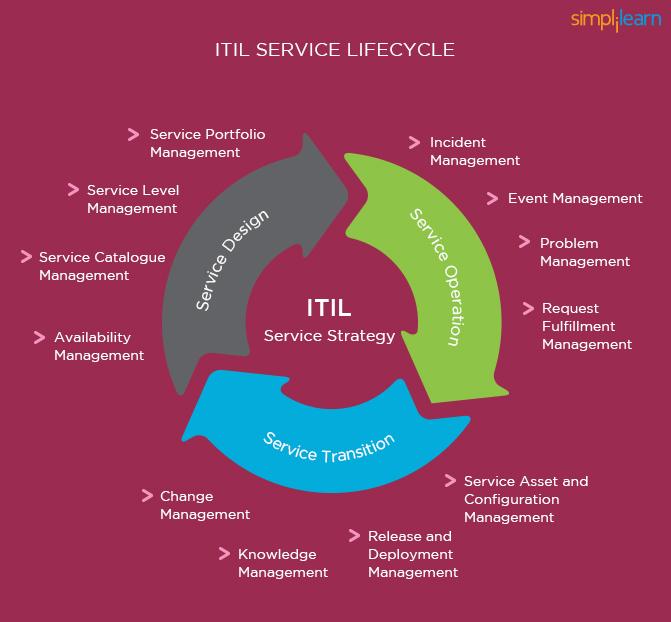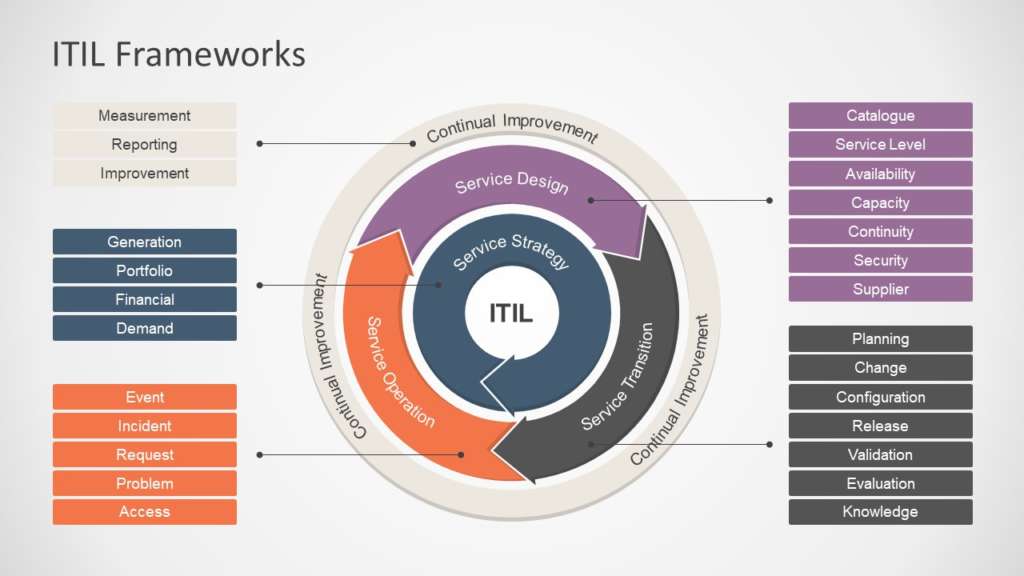 Most companies consider their people, ability, processes and technologies as strategic assets. Such an asset is what helps to deliver and support the vision and mission for the company.
Most companies consider their people, ability, processes and technologies as strategic assets. Such an asset is what helps to deliver and support the vision and mission for the company.
Effective and efficient alignment of resources & capabilities of products and services helps in creating strategic benefits in the market that server companies.
Here comes the ITIL or Information Technology Infrastructure Library.
ITIL is the IT service management widely accepted in the world. It helps companies and individuals use IT for realizing business and organization complex system. For this reason, many professionals pursue ITIL Foundation Certificate, which is the entry-level ITIL certification, to gain expertise in delivering effective IT services.
What is ITIL?
ITIL is an IT service management practice focusing on the line up IT services as per the business needs. Every organization has certain products or services. For each product or service, the framework of ITIL helps to manage support, industrialization, delivery, and Consumerization from beginning to the retirement.
The primary five stages of this framework include:
- Service Design
- Service Strategy
- Service Operation
- Service transition
- Continual Service Improvement
In the ITIL service lifecycle, each stage supports other stages. The service will not specify each capability needed for any particular organization. But for making a roadmap, ITIL gives practical guidance through strategies and services. It also complements the best practices of other industries.
Basic Concept
- Delivers maximum value to the customers and not force them to face an unpredictable risk and costs
- Delivers maxim service value to the customers
- Optimization of resource and capability usage
- Services offer the best utility with a trustworthy warranty
- Processes have to be planned efficiently for each objective
- Each role are defined clearly for each task and put a collective effort
These concepts are made over the five stages of ITIL:
- Service Strategy
ITIL services the strategy showcase the asset service, maintenance, and implements strategies. The principle helps in pertaining issues to corporate governance and obedience, policies, business processes, decision making, service improvement, and corporate culture.
- Service Design
This stage deals with problems related to capacity management, supplier management, continuity management, catalog management, and more.
- Service Transition
The transition service helps activities in aligning evaluation changes, management changes, application development, project management, releases and deployment, service assets management, service validation, and knowledge management.
- Service Operation
It addresses the activities related to incident management, event management, access management, request fulfilment, IT operations control, problem management, application management, facilities management, technical management, and more.
- Continuous improvement
It defines the roadmap for managing service reviews, process evaluation and monitors CSI initiatives.
Who can benefit from using an ITIL service?
The ITIL service is beneficial for any size company that comes in all kinds of industries. Still, it is said to be more useful for mid-size to larger companies that have a formal process than others. It is most popular with companies related to healthcare, finance and insurance companies where IT and revenue are linked directly.
ITIL Versions
Now there are three versions available of ITIL. Version 2 showcases things to be done for process improvement and Version 3 offers guidance on improving the process and includes all aspects of Version 2. Currently, Version 3 is adopting more than Version 2.
In ITIL Version 2 and 3, the main difference is all new lifecycle structure in V3. ITIL V3 is the best understanding which seeks to implement feedback loops and arrange process in circular motion. It means V2 old structure gives support and service for delivery, which is now replaced with new core disciplines:
- Service Strategy: It determines the type of service to be offered for each market and customers
- Service Design: It identifies the requirement and devices the new service offers along with improvement in the existing ones
- Service transition: It builds and organizes new and modified services
- Service Operation: this carries out different operational tasks
- Continuous service improvement: It helps to learn from past experiences and continue bringing improvement, effectiveness as well as efficiency in processes and services.
Version 3 ITIL compliments Version 2 processes with the new ones and puts more emphasis on producing business values.
Reasons why an Organization should consider ITIL Framework
- ITIL is proven Worldwide
ITIL defines the standard terms and the concept within a cohesive set of practices that are best to meet market needs within the continual improvement cycle. Companies from across the globe have confirmed that they can adapt ITIL service for their business needs. The reason is that it is scalable and flexible for any shapes and size organization can implement this for delivering better business benefits in each stage.
When ITIL is used in work practices, its adoption offers organizations the confidence level for each action. The key contributor to the success of ITIL is the associated training, education and qualification schemes.
- Quality and better reliability of Service
ITIL is designed such a way to help every company to give more focus on customer needs and user experience than technological issues. When customer satisfaction gets increased, it leads to a trusted and better relationship.
- Optimization of service delivered
ITIL offers various significant opportunities to simplify and standardize across the trading partners. It provides models and processes that help service providers in working towards their businesses, users, customers, and suppliers to make a better investment, cost optimization, improvement decision, and risk management decisions in business. The major benefits include:
- Reduced support costs by 30%
- At first call, 20% increased incidents fixed
- Reduced risk and cost
- Increased value of ITIL service portfolio
- Competitive advantage
When an organization adopts ITIL services for lifecycle practices, they focus more on offering value to their customer and help in taking changes instantly to the business. By managing and defining the portfolio of customer and service enables growth and successful transformation of the industry with a competitive advantage. The benefits include:
- Reduced cycle time for each project by 30% to 50%
- Increase in success rate changes
- Reduced risk of late or unplanned changes
As business opportunities are growing day by day along with other possibilities, many challenges have come thereby related to services, confidentiality, and many more. Organizations must able to meet the service expectation by providing better product and service. ITIL framework helps organizations to get a clear insight on consistent and repeatable organizational process.
For more Information on ITIL Click here







